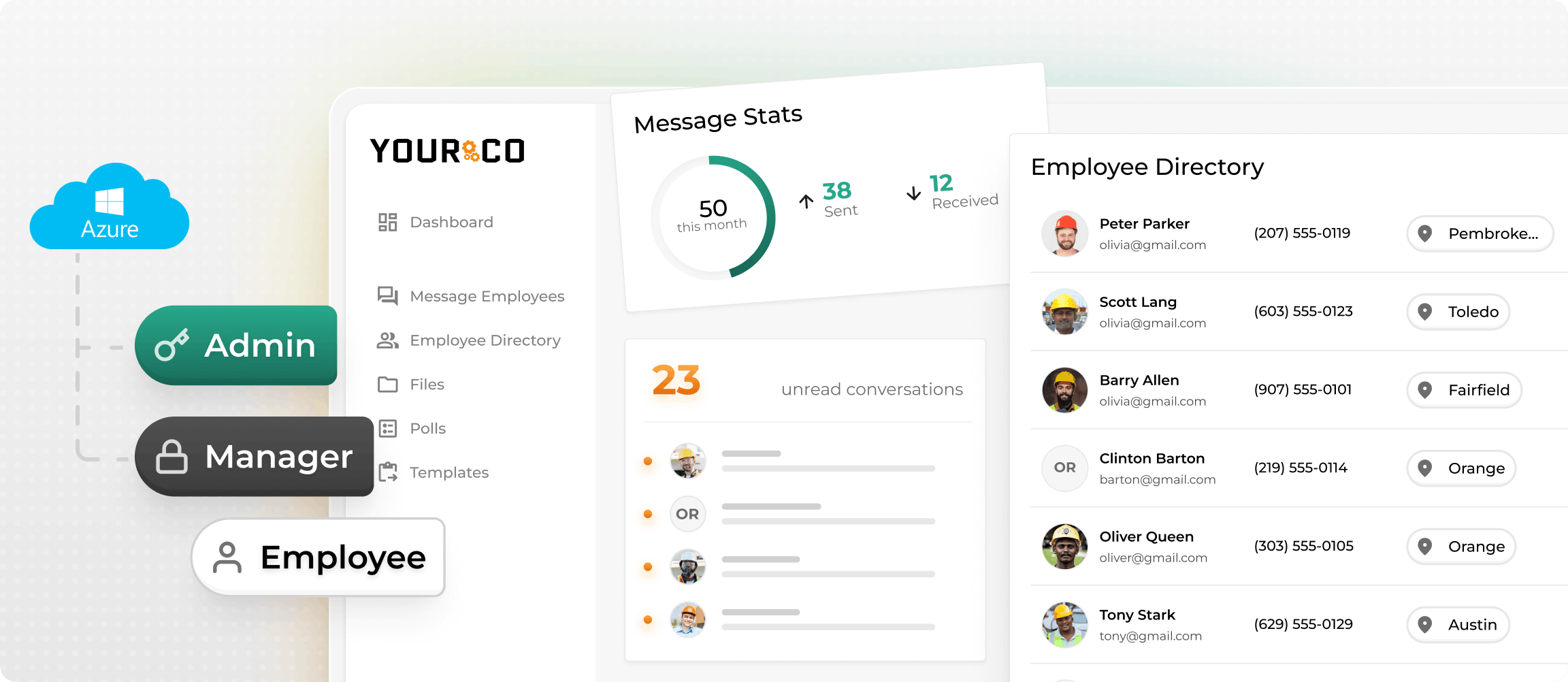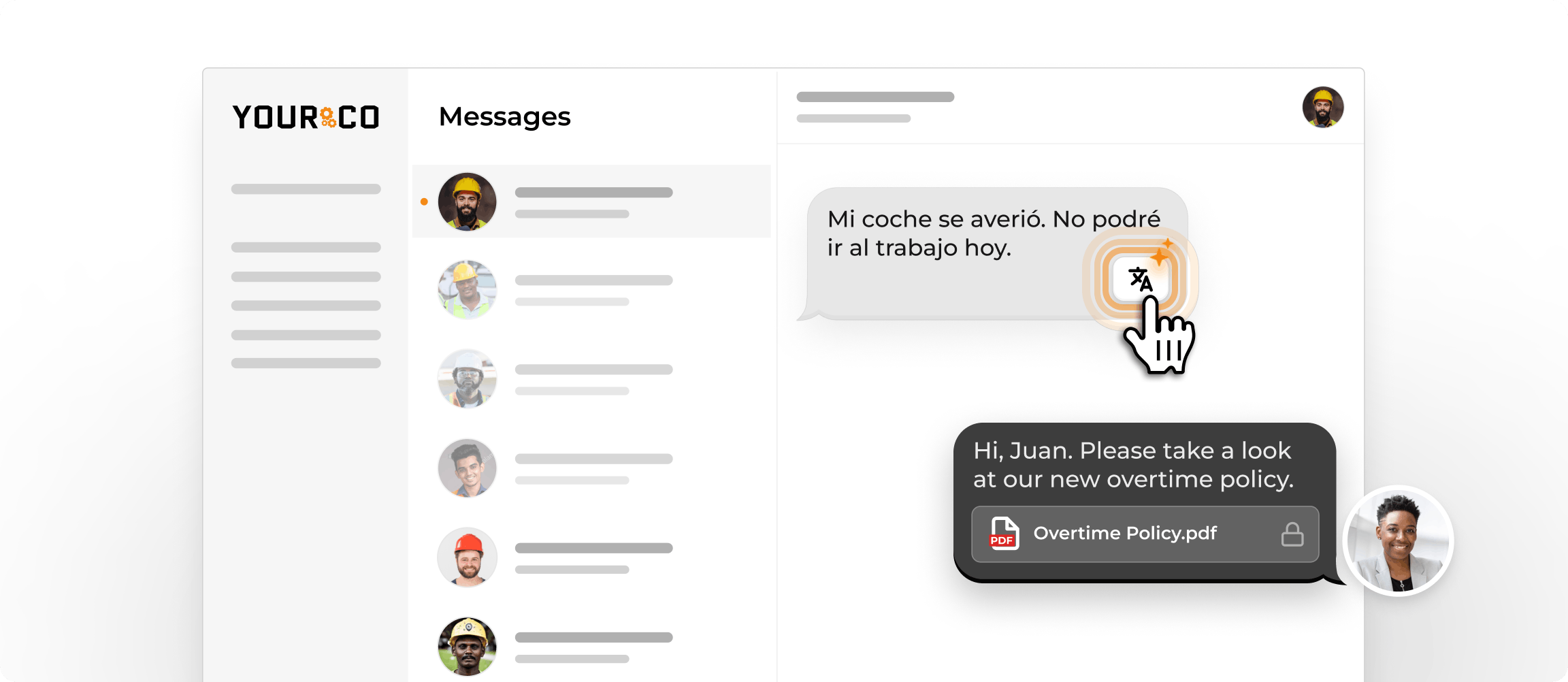Can You Fire an Employee for Excessive Absences?


One absence might mean overtime costs, missed deadlines, or even safety risks. When those absences start piling up, morale slips and your budget takes a hit. That's when absenteeism moves from an occasional inconvenience to a chronic problem you can't ignore. You can terminate an employee for excessive absenteeism, but only if you follow a clear, documented process. That means setting fair attendance rules, tracking absences carefully, ruling out protected leave, addressing concerns early, applying progressive discipline, and treating termination as the final step.
This guide breaks down each stage so you can handle absenteeism with consistency, fairness, and compliance in mind. While it offers best practices to protect your team and your business, we're not legal professionals, so always consult qualified legal counsel for specific legal advice.
Define What Counts as Excessive Absences
A clear, written attendance policy helps you decide when absences move from occasional to problematic. When every employee can point to the same rules, you eliminate confusion and protect yourself from discrimination claims. Consistent standards also make it easier to apply the same expectations across roles, whether someone works on the factory floor, in the warehouse, or out in the field.
Your policy needs to cover three core elements:
- Clear definitions of sick leave, paid time off, protected leave, tardiness, and no-call/no-show situations
- Simple reporting steps, including who to contact, how, and by when
- Fair consequences that outline what happens when limits are crossed
Write the same rules for every department. Different standards for different teams can lead to complaints and legal trouble.
For industries like manufacturing, logistics, and construction, be specific about shift requirements. These teams depend on full coverage, and one missed shift can shut down a line or create safety risks. Many employers use a points system to help supervisors track absences objectively. Just make sure protected leave never counts against employees.
Share the rules early and often. Cover them during onboarding, post reminders near time clocks, and send regular SMS updates so workers without company email stay informed.
There's no universal number that defines "too many" absences. Your policy sets the line, whether it's six unexcused absences in six months or 12 points in a rolling year.
Document Attendance Carefully
If you can't prove it happened, it didn't. Good attendance records with timestamps help you spot patterns, support your employees, and back up decisions later.
Paper sign-in sheets and spreadsheets create problems and make it easy for coworkers to clock each other in. Digital tracking tools significantly reduce these issues. Automated time clocks, SMS check-ins, or badge scans create a clear record that can't be changed afterward. This protects both you and your employees when questions come up.
Make sure every entry captures:
- Date and shift times with start/finish timestamps
- Check-in method (time clock, text message, kiosk)
- Absence reason in the employee's words
- Supporting paperwork like doctor notes or documentation
- Follow-up conversations or warnings about the incident
For teams working across different locations, mobile-friendly systems make a big difference. Tools that let workers clock in from their job site or send a quick text when their shift starts keep your records current even when employees don't have access to a computer.
Store attendance records in a password-protected system with limited access. Many cloud platforms now encrypt your data, addressing privacy concerns while providing security. Clear records, consistent tracking, and strong security turn documentation from a hassle into your best protection.
Rule Out Protected Leave or Accommodations
Not every absence can be treated the same way. Some types of leave are legally protected, which means they should not be counted as "excessive" under attendance rules.
For example, federal laws like the Family and Medical Leave Act (FMLA) give eligible employees job-protected time off for certain family or medical reasons. Similarly, the Americans with Disabilities Act (ADA) may require adjustments when absences are tied to a medical condition. In practice, that can sometimes mean offering extra time away from work if it doesn't cause major operational issues.
On top of federal requirements, many states and cities also mandate paid sick time, safe leave, or family care provisions that extend beyond national rules. Because of this, companies often outline in their attendance policy which categories of time off don't count toward discipline, so managers and employees have a shared understanding.
A common approach HR teams use includes:
- Asking the employee for the reason behind the absence
- Providing any required forms
- Reviewing medical or other documentation as appropriate
- Exploring ways to support the employee's return to work
- Keeping thorough records of conversations, dates, and approvals
Since the exact rules vary, HR teams work with internal or external legal resources to confirm how these protections apply in each case. The key point is to recognize when an absence may be protected and handle it carefully before moving forward with discipline.
Communicate Concerns Early and Clearly
Raise the topic the moment attendance starts to slip. Addressing absences quickly keeps problems small, shows you care, and protects your records if discipline ever becomes necessary.
Begin the conversation in a supportive, non-accusatory tone. Instead of leading with policy violations, ask how the employee is doing and whether anything is getting in the way of regular attendance. Starting with empathy creates space for honest dialogue and often reveals solutions you hadn't considered.
Use open-ended questions to uncover root causes:
- "What challenges are making it hard to get to work on time?"
- "Is there anything at home or on the job we can help with?"
- "Do you understand how our call-off process works?"
- "Have you reviewed the attendance policy recently?"
Once you talk, write down the date, facts you shared, the employee's response, and agreed follow-ups. Thorough notes create a clear timeline, which helps you make fair, defensible decisions.
Non-desk teams rarely sit at a computer, so concise SMS works well to start the dialogue. Keep the text short, neutral, and supportive: "Hi Maria, I noticed you missed two shifts this week. Everything okay? Let's chat today so we can help."
After the text, move sensitive details to a phone call or in-person chat where tone and privacy are easier to manage.
Language barriers can derail even the kindest message. Send key points in the employee's preferred language and have translated handouts of the attendance policy ready. Clear communication in their preferred language shows respect and improves understanding, which helps reduce future absences.
Apply Progressive Discipline Consistently
A clear, step-by-step discipline process protects you and gives the employee every chance to fix attendance problems before you consider letting them go. Progressive discipline uses these four escalating actions:
- Verbal warning through a private chat where you review the absence record and restate expectations
- Written warning as a formal letter that outlines specific dates missed and the improvement required
- Final written warning often paired with a short suspension to make it obvious termination is next
- Termination as the last resort after prior steps fail to correct the pattern
Each stage should be documented and acknowledged in writing so there's no confusion later. Consistency matters most. Apply the same threshold and timing to every role covered by your attendance policy.
For frontline teams spread across shifts or locations, make sure supervisors understand the process and apply it the same way. Text-based communication can help ensure remote workers receive and acknowledge warnings properly.
If your workforce is unionized or subject to civil-service rules, check the contract language before moving past a written warning. Some agreements require union representation in meetings or impose waiting periods between steps.
Pair discipline with an improvement plan that spells out what good attendance looks like, sets a review date, and offers support (such as flexible scheduling, transportation help, or referrals to wellness resources), so the employee has a real chance to turn things around. A process that balances accountability with help limits legal risk and preserves team morale.
Make Termination the Last Resort
Fire an employee for absenteeism only after you've tried everything else to help them improve and your records clearly support the decision. Termination becomes the right choice when an employee has ignored progressive discipline, missed clear warnings, and their absences aren't protected by FMLA, ADA, or state leave laws.
Before the meeting, prepare thoroughly by gathering the complete attendance file: dates, reasons, previous warnings, and any accommodations you offered. Double-check each absence against protected-leave records and have HR or legal counsel review the case. Write a clear termination letter that reflects your attendance policy.
During the meeting, keep things brief, factual, and respectful. Explain which policy was violated, mention the corrective steps you took, and confirm the decision is final. Don't get pulled into debating the details; those conversations should have happened earlier. Have final pay information, benefits details, and a company property checklist ready so the employee leaves with clear answers.
File the signed termination letter and write a brief memo about the conversation right away. Complete records help you handle wrongful-termination claims and make unemployment hearings much easier.
Treating the employee with dignity matters as much as following proper procedures. A respectful, organized exit protects team morale and your company's reputation during a difficult situation.
Prevent Future Absenteeism with Proactive Measures
Preventing absenteeism works better than managing it after problems pile up. Build a workplace where employees want to show up, both physically and mentally.
Start with recognition for good attendance through a simple point system where consistent attendance earns rewards like gift cards, extra time off, or first choice of shifts. Clear rules keep it fair for everyone and provide solid data when issues arise.
Give people ways to balance work and life through flexible schedules, shift swaps, and staggered start times. These adjustments help parents handle school drop-offs and let warehouse workers avoid rush hour traffic, reducing the pressure that leads to last-minute call-offs.
Regular conversations matter just as much. Check in with your team to catch problems such as burnout, transportation issues, or family stress before they turn into missed days. Make sure employees know about wellness resources so they get help, not just warnings.
Train supervisors to set the right tone. A quick "thanks for being here" makes a difference, and consistent coaching keeps everyone on the same page. When you combine recognition, flexibility, and open communication, employees choose to show up long before discipline becomes necessary.
Reduce Absenteeism with Clear Communication
When you follow the steps outlined above (clear policies, solid documentation, early conversations, and fair discipline), you have built a strong attendance program. The next step is choosing technology that makes your job easier.
Digital systems eliminate the mistakes that come with paper logs and spreadsheets while giving you real-time information you can use right away. Automated platforms improve accuracy and save hours of work for busy managers. This matters most in frontline settings where tracking attendance can feel overwhelming on top of everything else you manage.
Yourco makes that balance between accountability and empathy much simpler. When an employee needs to call out, they text a single number. The system records the time automatically, so you never have to search through emails again. Shift reminders go out before every start time, which cuts down on "I forgot" no-shows that leave you scrambling to find coverage.
The built-in translation feature ensures every policy update reaches your team in the language they use every day. Your message history stays searchable and organized, keeping your records ready for any audit without extra paperwork.
Yourco helps you track call-offs, send reminders, and keep clear records, all through simple text messages that work on any phone. Your team gets the information they need, and you get the documentation that protects everyone.
Try Yourco for free today or schedule a demo and see the difference the right workplace communication solution can make in your company.
Frequently Asked Questions
How do you define excessive absenteeism at work?
You decide what "excessive" means in your written attendance policy. Most teams flag repeated, unexcused absences that break a clear threshold, such as a set number of no-shows within a rolling period or a points system. There's no universal number, so create a rule that fits your workflow and apply it fairly to everyone.
What's the best way to document absenteeism?
Track each absence by date, reason, and any notes from your conversation. Digital tools timestamp entries and store them securely. This gives you a clear record if discipline or legal questions come up later.
How can managers reduce absenteeism before it escalates?
Catch patterns early. Hold a quick, supportive conversation, offer help where you can, and remind the employee of expectations. Steps like flexible scheduling, small attendance rewards, and wellness resources cut absenteeism significantly.
What’s the difference between excused and unexcused absences?
Excused absences are those that follow company policy and are usually supported by documentation such as a doctor’s note, a jury duty summons, or prior approval for vacation. Unexcused absences occur when an employee misses work without following the reporting process or without providing a valid reason. Defining both clearly in your policy helps employees understand expectations and protects you from disputes later.





